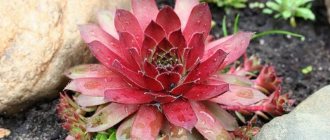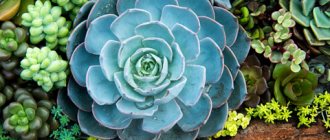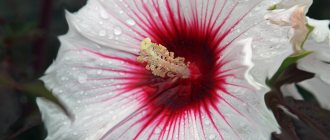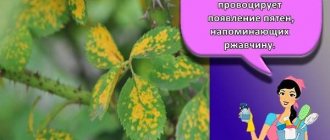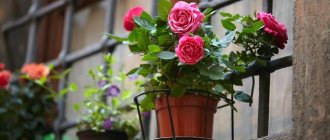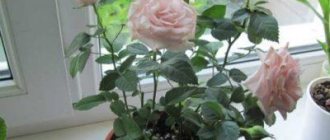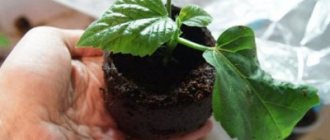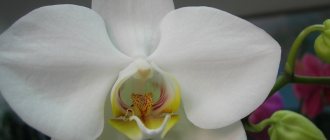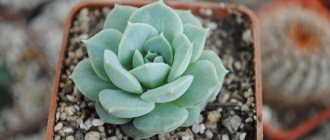Echeveria - what kind of flower is it?
The succulent echeveria is a perennial of the Crassulaceae family. There are about 200 varieties in natural conditions, with a small number grown as ornamental varieties.
Echeveria
In nature, it is distributed in America - California, Peru and Mexico. The name of the species was given in honor of the Mexican artist who described the flora of the country - Atanasio Echeverria y Godoy.
At home, gardeners prefer Echeveria shaviana, which is characterized by a corrugated ridge and leaves with pinkish edges. Echeveria hump-flowered, desmet and agavoides also deserve no less attention.
The crop has bluish-gray foliage; the largest subspecies reach 15 cm in width and 25 cm in length. The stems are smooth and miniature. The foliage is collected in a dense rosette and resembles a rosette in appearance. Some varieties have a smooth surface, others have a pubescent surface.
Use in design
Plants look great on window sills in classic pots and in the most unusual containers.
To create a unique decor, you can plant various types of echeveria in the aquarium, add cacti or other dwarf plants to them.
Varieties of indoor plants
The species of the echeveria flower are very diverse, there are from 150 to 200 varieties. They grow crops not only in pots, but also in glass flowerpots.
Echeveria elegans
Echeveria - home care and reproduction
Echeveria graceful has grey-bluish foliage and a flat rosette. The shoots are straight, over time they take a horizontal position and spread along the ground, and are able to take root independently in the soil.
Large plants have rosettes up to 15 cm in diameter; children develop on high shoots. The average width of the leaves is 2 cm, length - 5 cm. The inflorescences have a pinkish or bright scarlet hue, with a yellow edging on top.
Important! Varieties with a missing stem also include Echeveria agave. It is valued for its unusual foliage coloring with a transition from a light green center to reddish edges. The surface of the leaf blades is covered with a whitish coating.
Echeveria graceful
Echeveria carnicolor
According to the description, it has a short, branching stem, up to 6 cm in length.
The rosette is medium in size, up to 15 cm high, up to 10 cm wide. The foliage is medium dense, the color resembles meat. It reaches 7 cm in length.
Echeveria glauca
It has gray-blue foliage with a pinkish border along the edges, leaf blades with a bluish waxy coating, resembling a spoon in shape.
The inflorescences are located on lateral peduncles, the flowers are orange-colored.
Important! Echeveria pulidonis also has a bluish tint, but the border is bright red. The bright yellow flowers are bell-shaped.
Echeveria agave
Echeveria Black Prince
The succulent has a fleshy rosette, up to 15 cm in diameter. The foliage has a light green tint, the inflorescences are located in lateral five-membered segments.
The flowers of Echeveria Black Prince with a scarlet-chocolate or orange hue are on a high stalk.
Echeveria Black Prince
Echeveria leucotricha
It belongs to the pubescent varieties; whitish hairs grow on green leaves with a brown border along the edges. Externally, the culture resembles a newborn animal, the diameter of the rosette is up to 20 cm.
Important! Interesting varieties include Echeveria purpuzorum. It has tough, triangular-shaped foliage with pointed tips. The inflorescence reaches 20 cm in length, collected from orange-yellow flowers.
Echeveria fulgens Lera
Small and bushy, with thick shoots extending from the main outlet. Children grow up on them. The foliage has a light green tint and is covered with a waxy coating along the edges.
The standard leaf size is 10 by 4 cm. It blooms with reddish flowers in the February cold.
Important! Echeveria lau also has a waxy coating, which is observed even on the flowers.
Echeveria Derenbergii
The difference between this variety is considered to be the many creeping shoots extending from the main rosette (6 cm in diameter).
The top of the foliage is decorated with a scarlet border, the general shade is bluish-olive or whitish. Spike-shaped inflorescences consist of five flowers, the length of the peduncle is up to 6 cm.
Transfer
It is recommended to replant a young plant once a year. Adult specimens do not need to be replanted often; once every three to four years is enough.
Transplantation should be carried out in the spring.
For replanting you will need a suitable pot. It should be low, but wide enough. The pot should have drainage holes. Before transplanting, it is recommended to check the root system of the plant. Damaged or diseased roots must be carefully removed, and healthy ones can be washed in a weak solution of potassium permanganate.
Place a drainage layer at the bottom of the pot, which will absorb excess moisture. Next, you need to pour slightly moistened soil into which you need to carefully place the plant. The recesses should also be sprinkled with earth and leveled evenly.
When transplanting a flower, you cannot water it. The next watering of the succulent should be scheduled no earlier than a week after transplantation.
How to care for echeveria at home
Following the rules allows you to get a beautiful and healthy crop that will bloom on schedule, in accordance with the characteristics of the variety. Echeveria, which is not difficult to care for, nevertheless has its own requirements for soil, frequency of moisture and fertilizing.
Illumination and temperature conditions
Echeveria - species: agave, Pulidonis, Black Prince, Purpuzorum, Lilacina
Conditions of detention depend on the time of year and additional factors:
- temperature in the room - in autumn and winter from 10 to 16 degrees, during flowering - from 18 to 21 degrees;
- in spring and summer - feels good in dry air and temperatures up to 30 degrees.
All varieties adore the sun - the color and density of the foliage depends on the amount of light.
Important! Young animals are gradually accustomed to direct sunlight so as not to accidentally burn them. Echeveria does not like spraying or high humidity.
Watering rules and humidity
Water the succulent only after the soil in the pot has thoroughly dried. In winter, the frequency of soil moisture is reduced to a minimum - otherwise, excess water will lead to the tilting of the stem.
Before the procedure, tap water is left to sit for 48-72 hours or aquarium water is used - it will act as a kind of feeding.
Important! You can determine the lack of fluid by the condition of the foliage - it will become limp and wrinkled. When moistening, the liquid is poured under the flower without touching the leaves.
Watering
Fertilizing and soil quality
In the spring and summer, they are fed with special mineral fertilizers for succulents and cacti; procedures are carried out monthly. Starting in the fall and throughout the winter, feeding is not carried out, as is the case after transplanting to new soil. Echeveria does not require organic or nitrogenous fertilizers.
She prefers low-nutrient, sandy and loose soil with a neutral reaction. What suits her best is a ready-made store-bought mixture for succulents and cacti. If you wish, you can make your own soil mixture, choose one of the options:
- mix 1 part turf and leaf soil, 2 parts river sand;
- 1 part loamy and peaty soil and 2 parts coarse sand.
To prevent the development of root rot, a small amount of charcoal is added to the soil mixture.
Important! When planting, a drainage layer is placed in each container - up to 1/3 of the box. Expanded clay, crushed brick, pottery shards or pebbles are used as drainage.
Flower container size
A shallow root system requires a wide pot with minimal depth. Its diameter should be 1.5-2 cm larger than the flower itself.
You should not take products without drainage holes - moisture will stagnate and the roots will rot.
Pruning and replanting
Transplantation work is carried out annually. They act as carefully as possible, trying not to damage the root system and foliage.
After purchasing, the crop needs to be replanted after a few weeks - until the appointed day, watering is completely stopped. The movement takes place with a completely dry earthen ball and only then the soil is moistened.
No special pruning is carried out - the dried lower leaves are regularly removed to preserve the decorative appearance of the crop.
Important! If in the spring the rosette begins to stretch out, then you can cut off the upper part, leaving 3-4 cm. This will rejuvenate the echeveria and produce new shoots.
Transfer
Description of Echeveria and its features
Very often, echeveria is called a “stone rose” - the plant, whose diameter does not exceed 15 cm, has the shape of an original attractive rosette of thick, fleshy leaves collected in a spiral.
The leaves themselves, depending on the type of echeveria, can be either pale light green, almost whitish, or green, with a bright burgundy border, or completely burgundy.
But even with such a variety of shades, they are united by one feature - the presence of a protective coating on the surface of the sheet. It may be a waxy coating of grayish-white color or a thin velvety fluff.
This protection protects the leaves of the plant from the scorching summer sun or from the winter cold. Under the influence of the sun, the thickness of the coating increases slightly, giving the leaves a smoky bluish tint.
Succulents bloom most often in spring and summer, but some varieties of echeveria can produce flowers in winter. The flowers are formed at the end of the peduncle, which, depending on the species, can reach a height of 90 cm. Flowering, which requires a lot of sun to maintain, is abundant and long-lasting.
Features of plant flowering
Ficus microcarpa - care and propagation at home
Not all types and hybrids of succulents bloom; some of them require special conditions.
Important! Small echeverias can be combined in mixes when constructing compositions.
Echeveria blooms most often in the spring and summer months and lasts from 2 to 4 weeks.
Most varieties go dormant in winter. This time requires good lighting and a temperature range of 8 to 15 degrees. Watering is reduced to once a month.
A long lateral or vertical peduncle emerges from the rosette; small flowers collected in inflorescences are located on it.
The color of the petals directly depends on the light level. Insufficient light results in yellow flowers, and bright light results in orange or reddish flowers. After flowering ends, babies form on the peduncle.
Echeveria black prince. Echeveria "Black Prince"
350 p.
Echeveria - Echeveria
Echeveria with the proud name Black Prince (Echeveria agavoides cv. Black Prince) A brutal beauty with leaves that are green from the base, turning into a dark burgundy, almost black hue. The more sun, the darker and more dramatic our prince. We love her for:
- beauty and photogenicity. A must have for your (and ours) pictures on Instagram and Facebook! It is beautiful in any pot, on any windowsill and in any photo! And the view from above is simply space!
We dislike for:
- the fact that she, like all echeverias, is very capricious! Perhaps the most capricious of all succulents. We advise beginning flower growers not to get too attached to it))
Place of power
- In summer - the sunniest window sill. It is in the sun that the plant feels best and is covered with our favorite waxy coating!
- In winter - a bright, cool place (10-15 degrees). In winter he has a winter quarters!)
Ideal diet
- In summer - on average - 1-2 times a week until the ground is completely wet, or 2-3 times a little at a time. When a new pet appears in your home, it is better to water it less and less at first, and if you see that the leaves begin to wrinkle, gradually increase the frequency. And remember that the soil must dry out completely between waterings! And after drying, the next watering is not immediately, but after a few days!
- The frequency of watering also depends on the size of the pot - in our experience, in the heat in Moscow, it is better to water small pots d 5.5 cm 3 times a week, about a tablespoon. And in the summer in St. Petersburg, sometimes once a week is enough.
- All that can be advised is to act according to the circumstances. But don’t forget about the main thing - it’s better to underfill than overfill!!!
- We also recommend watering once a month with a weak solution of fertilizer for cacti and succulents in the summer. Especially if the pot is small.
- And also about watering - many gardeners recommend bottom watering for all echeverias, pachyphytums and their children - this means putting a plastic pot in water for 15-20 minutes, the water in the bowl should be about half the pot. The earth will then absorb exactly as much water as needed, which will save the plant from the danger of “choking”, and will also avoid water getting on the leaves and rosette. But let's be honest - we don't bother like that) But you try!)
- And perhaps it’s not worth reminding that water for irrigation should sit for 1-2 days?
Something went wrong if
- the leaves are pale, the rosettes are elongated, the stem is elongated - there is not enough light for the plant.
- the leaves wrinkle, the rosettes shrink - this happens in the heat when there is a lack of moisture in the soil.
- the leaves at the base soften, easily separate, and rot - this is gray rot caused by excessive watering and stagnation of water in the pot.
- It grows slowly, the leaves are small - perhaps the pot has become too small and the plant does not have enough nutrition or insufficient watering.
Methods for propagating a flower and when is the best time to do it
There are several methods to help propagate the crop. The most convenient methods of propagating echeveria include leaf and rosette.
Echeveria leaf propagation
The leaf is separated from the mother's body and dried for a week. This principle helps to avoid its rotting in the ground. The outer side of the leaf plate is placed on moist soil and rooting is expected at a temperature of 25 degrees. After the first rosette appears, the culture is planted in separate boxes.
Important! Echeveria pearl of Nuremberg is considered convenient for leaf propagation - it feels great with a maximum amount of light and a minimum amount of water.
Propagation by sheets
Reproduction by rosettes
It is one of the popular methods and is carried out by separating the daughter from the mother.
The cut is treated with charcoal powder and dried for 12 hours. Afterwards, the rosette is planted in wet sand and awaits rooting. The method allows you to obtain the rapid appearance of peduncles.
Diseases
Root rot is the main danger for succulents. It is most often caused by overwatering and causes bacterial infections. Fortunately, this is easy to avoid: reduce the frequency of watering, use the right soil and a pot with a drainage hole.
Photo used as illustration. Source: Yandex.Images
Inspect your Pearl von Nuremberg regularly. Rotted areas will be brown or black and limp. Typically, rotting begins at the roots and spreads up the stem.
Therefore, if you find an infected part, you need to cut it off. You can also transplant the plant into a new pot with fresh, dry substrate.
Growing problems, diseases and pests
Succulent varieties are rarely attacked by insects and diseases; in most cases, problems arise if they are not properly cared for. Frequent and excessive moisture provokes the development of powdery mildew and root rot. To prevent their appearance, it is necessary to occasionally moisten the soil - only after it has dried to a depth of several centimeters.
Important! If infection has occurred, the crop is replanted by excising the damaged areas and treating them with a fungicide.
Mealybugs and rootbugs pose a particular danger to succulents. They cause growth and development to stop and are identified by a whitish coating and deformation of the flower. Treatment is transfer to a new container with simultaneous removal of damaged areas. At the end of the procedure, treatment is carried out with a solution of Fitoverm and Aktara.
How to deal with them
Treatment depends on the type of problem:
- yellowing of foliage - caused by stagnation of water in the ground, it is recommended to stop moisturizing the echeveria until the earthen clod dries out;
- flaccid and wrinkled leaves occur due to lack of fluid;
- drying out of the lower ones is a normal phenomenon in winter; after falling off, the formation of children begins.
If the leaves of a crop droop and some of them begin to fall off, then the problem is associated with excessive moisture in the winter. If you follow all care recommendations, then major difficulties will not arise.
Echeveria is an original and beautiful flower that is very popular among gardeners. With its help, they decorate greenhouses, alpine slides in their gardens and living spaces in houses. Caring for satin, bristly or black prince echeveria at home does not cause difficulties even for inexperienced gardeners.
Echeveria diseases and methods of combating them
If you water too often, water stagnates in the pot. This becomes the main reason for the formation of fungi. To prevent this, water the crop properly, and do this only after the soil has completely dried.
Also, in the process of growing this crop, the following problems may arise:
- Fragility, blackening of shoots is a signal of frequent watering or poor water drainage . To avoid such problems, you should follow the correct watering regime.
- A loose and very elongated rosette indicates a lack of ultraviolet rays . Move the plant to the right place to make up for this deficiency.
- Reducing leaf size . This becomes a clear sign of nutritional deficiency.
If the leaves of the “stone rose” wrinkle, it means it’s time to water.
Succulent pests
This genus is not afraid of most pests; it is quite resistant to various insects. But powdery mildew can cause problems if plants are grown indoors. These pests appear as small white spots on the leaves. If you notice powdery mildew, isolate the plant from other houseplants. Wipe the foliage to remove the pest and, in extreme cases, discard the plant or use an insecticide.
Reproduction
Echeveria is characterized by propagation by cuttings, seeds and leaves.
Cuttings
To propagate, you need to carefully separate the top of the echeveria, first removing the leaves from it. The cuttings must be left to dry for several hours. For planting, you need to prepare a special pot and a suitable substrate. The cuttings should be immersed in the substrate, sprinkled with sand and covered with a transparent bag.
With this method of propagation, it is necessary to periodically ventilate the seedlings.
Seeds
The plant can be propagated using seeds. Seeds for planting can be purchased at a flower shop or collected when the succulent is flowering. You can plant succulent seeds in February or March. To do this, you need to place a loose mixture in a special container and place the seeds in it, but not sprinkling it with soil, but only slightly pressing it into the ground. The planted seeds should be lightly sprayed with warm water and covered with glass. The sprouts need to be ventilated daily. In about two to three weeks, the first shoots should appear.
